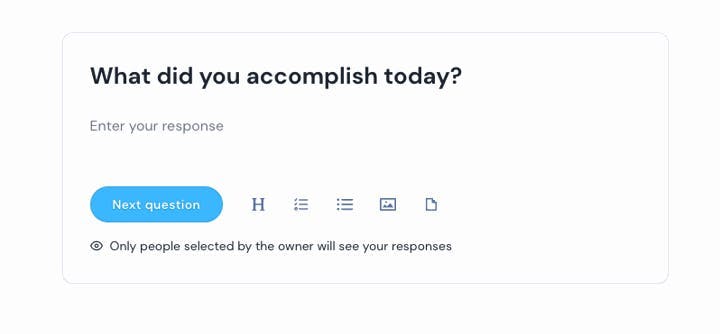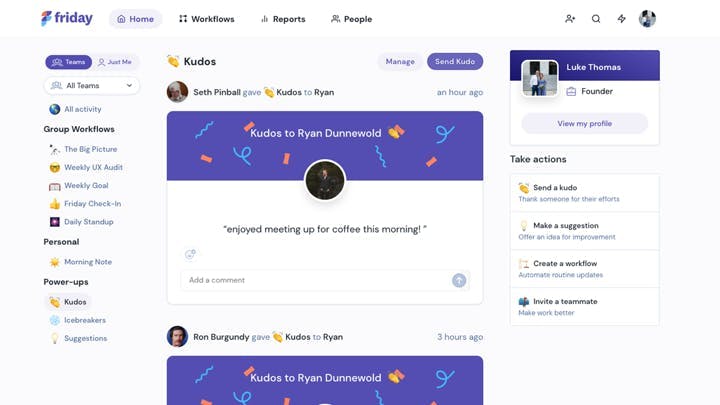How to Manage a Distributed Team

I’ve worked on distributed (or partially remote) teams for over five years. I’ve also managed a distributed team for over three years. I’ve seen when it works well, and I’ve seen it fail. For certain organizations, a remote workforce can be a massive benefit, but it’s not for every organization. As remote work continues to grow, there's a need for leaders to level-up their understanding of how to run a remote team.
I’ve created this guide for leaders of distributed teams. My hope is to save you time, headaches, and money.
As an aside - we are writing a book on distributed work and this is one of the chapters. You can learn more here.
Everything needs to be built on trust
The first and most important part of leading a distributed team is that you need to have a working relationship that's built on trust. If you don't trust people on your team, you will become a psychopath.
I'm not an expert on building trust, but the way I think about building it is two-fold:
- Delivering on commitments - person says they will do X in Y time period. Person delivers. Rise and repeat.
- Getting to know the person - The people you work with need to feel more than words on a screen.
One benefit of working in the same location is that regular observation acts as a restraining force if your mind starts to wander about what someone is working on. You also realize that the people you lead are more than words on a screen.
The only solution we know of is to regularly write things down and share them. If a teammate tells me on a Zoom call that they are doing X in Y time period and I leave the call and forget what they said, the ambiguity can create potential problems in the future.
Please note - we aren't encouraging you to micro-manage, but instead, create a rhythm for having a clear understanding of what people are currently working on and what they aim to accomplish in the near future. We offer more tactical advice in this post on building trust when remote.
1.) Establish clear roles & responsibilities
The next thing you need to do is to create clear job responsibilities. If you’ve inherited an existing team, spend some time in the first meeting clarifying roles and responsibilities for each person. Make sure to take notes and publish them in Google docs or a location where it’s visible to you AND the employee. More importantly, this needs to be regularly updated if something changes.
I recommend using a scorecard format.
This will serve you well in the future if you need something to reference. Many management problems can be solved if you write things down. Don’t leave important details up for interpretation.
2.) See how each person likes to work
It’s not a difficult process to create clear roles and responsibilities, but it’s much tougher to understand how each person likes to work. Where is their natural home? We recommend taking a personality test (take a free DISC assessment here) and discussing the results. People are different, so you need to understand what that actually means.

In addition, we recommend answering questions like, “what gives you energy?” and “what drains you?” and making the answers visible to everyone. This will go a long ways in helping establish communication/behavioral norms as a group.
Make sure to document and share the results. As a remote team, we can’t stress enough that you need to write things down and make them easy to access (and reference). If you’re a new manager this is especially important. If you want to learn more, I recommend checking out our guide on building relationships as a remote team.
3.) Document communication norms
Next, you will want to establish communication norms and write them down. For example, we recommend establishing the following items:
- Meetings – which ones are required? What is the format? What are the expectations?
- Communication channels – Should we default to Slack for communications? Or email? If the employee receives an urgent message during off hours, what is the protocol around that?
Make sure to adapt this over time, adding information as you go. As a bonus, this can be used when onboarding new members.
As you can tell by now, it's critical that create and maintain proper documentation.
4.) Have regular 1-1 meetings
If you manage a team remote team, having regular 1-1s is the most important thing you can do. This short, 30 minute meeting with each person on your team allows you to understand what’s going on – you can also discover ways to improve productivity and happiness. We strongly encourage you to use video for these meetings, as you can pick up a lot of unspoken cues (like body language).
I would go so far and say that you will 100% fail as a remote manager if you don’t have these meetings on a regular basis. They are the bedrock to your success.
5.) Meet up in person (periodically)
I’ve found meeting up in person to be extremely helpful, especially when onboarding new hires. There’s a variety of benefits to this approach, including:
- Knowledge transfer (especially if you don’t have great internal documentation like many organizations)
- Accelerate relationship-building (there’s nothing like hanging out with people in-person)
- Have higher-level conversations (company strategy, product direction, etc)
- Building a personal connection (like going out to a team dinner, etc)
For existing employees, if you can afford it, try to meet up in person once per quarter for a few days (organizations like Buffer and Zapier have great insights on this).

I’ve found this cadence to be ideal both as a remote employee and as a remote manager. It is frequent enough to keep everyone on the same page, but infrequent enough so it doesn’t disrupt your personal life too much.
We wrote about this topic in detail in a separate post.
6.) Hold regular standups
Daily standups are a great way to stay in sync and remove roadblocks on a daily basis. As a remote team, you can’t all meet in one room, but you can do this asynchronously.
The first few days you’ll need to encourage people to respond, but we strongly encourage you to implement this process with your team. Not only does it help improve the flow of information, but it also is a way for each person to create mini-commitments around what they hope to accomplish, which improves trust when they deliver on them.
You can use a tool like Friday to help here.

7.) Create a weekly feedback loop
Creating consistent feedback loops with your team is one of the most important things you can do. That’s why we recommend holding a weekly review (or check-in) in addition to standups. There are things people won’t tell you in-person during a 1-1 meeting, but they will behind a screen. In a weekly recap, you ask a few questions like:
- What was the best part of your week?
- What was the most challenging part of your week?
- Is there anything you’re stuck on?
These basic questions can unlock what makes each employee tick. You can also understand what roadblocks exist. You will be shocked at the feedback you get behind a screen. You can use our weekly check-in template to help.
8.) Say thanks on a regular basis
This is a super simple tip, but recognition is hugely important when managing a distributed team. It’s important to recognize good work – it could mean the difference between an employee staying at your company (or leaving).
You don't need to invest in cheesy prizes or spot-bonuses. If you setup an effective system for saying thanks that's baked into everyday workflows, it will be something that everyone jumps on board with. This shouldn’t be forced.
Friday can help here as well - send kudos when giving routine updates.

9.) Establish clear goals and consistent reporting
The final step we recommend is to establish clear goals and consistently report on how you are tracking towards key results. We think there a few building blocks to success, which we've listed below:
- Goals should not be hidden in a spreadsheet - they need to regularly referenced and easy to remember. If they are hidden, they won't impact the day-to-day
- Clear areas of ownership - who is responsible for what?
- In workflow - Goals influence day to day work, which is why its critical that they be integrated into your everyday workflows.
Wrapping up
We’ll keep this post updated as we learn more about managing a distributed team. This is still unexplored territory, so there’s a lot to learn. You can read more of our remote work posts on the remote hub.
